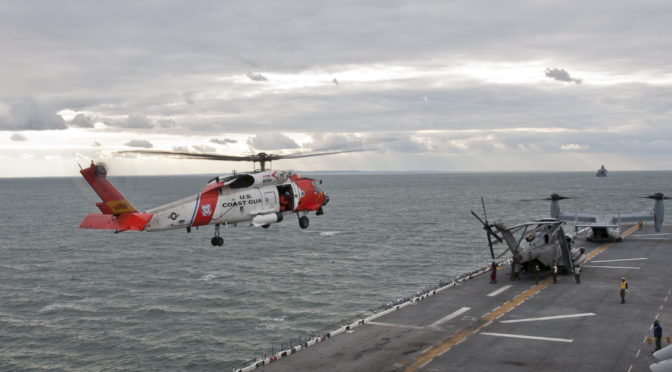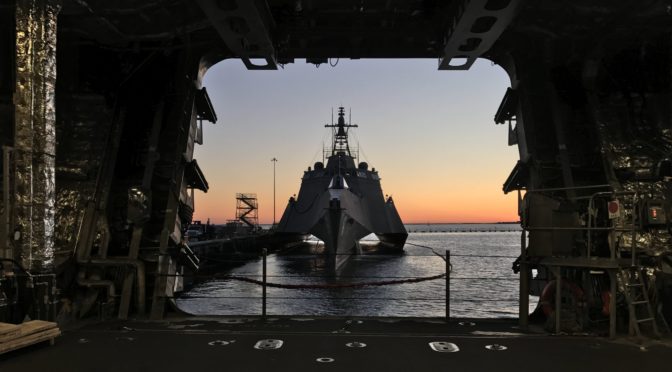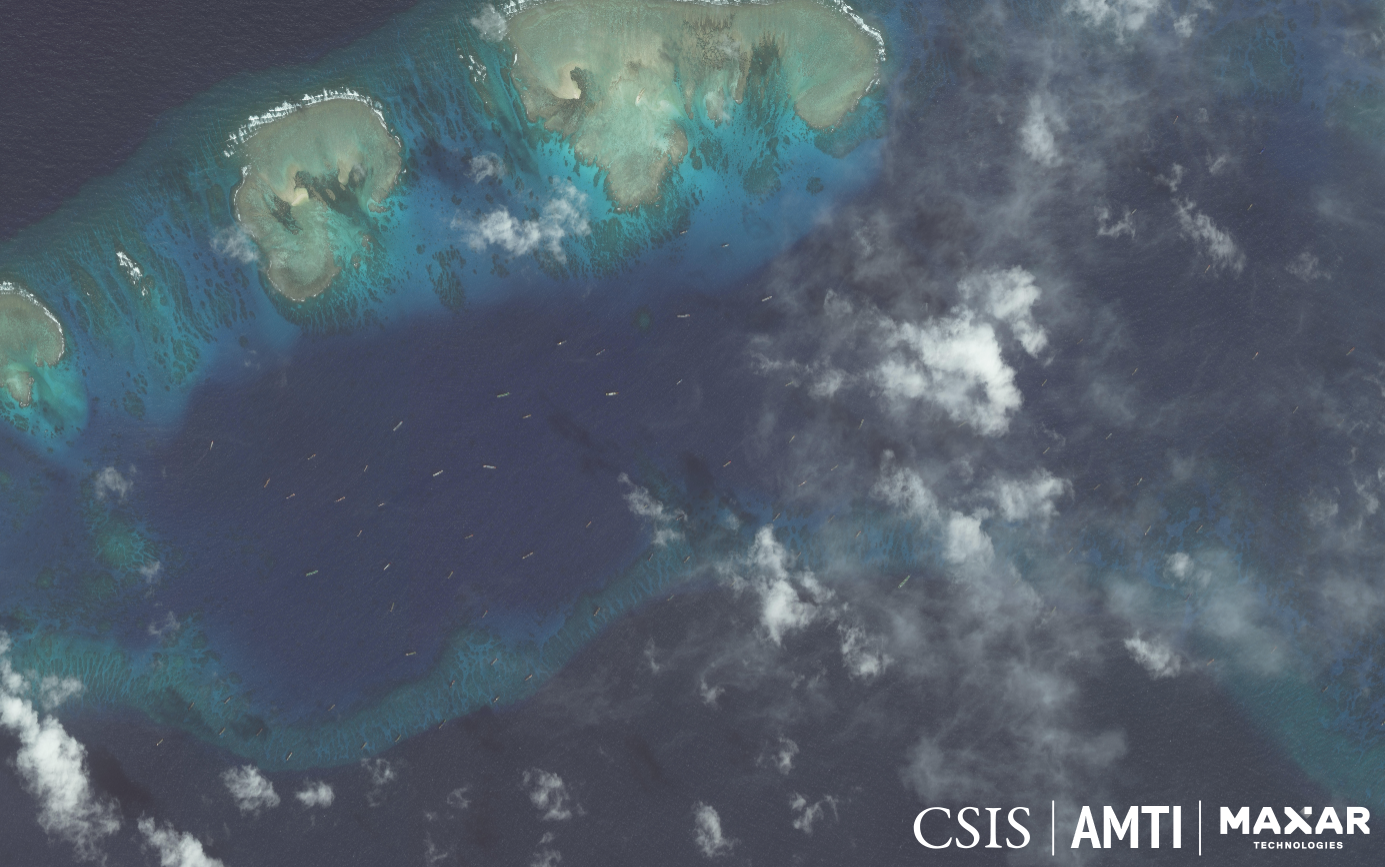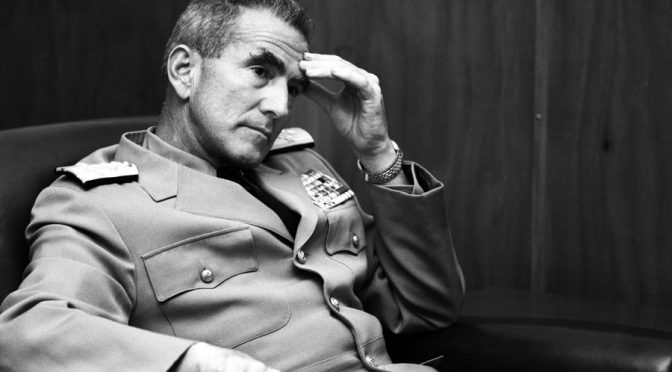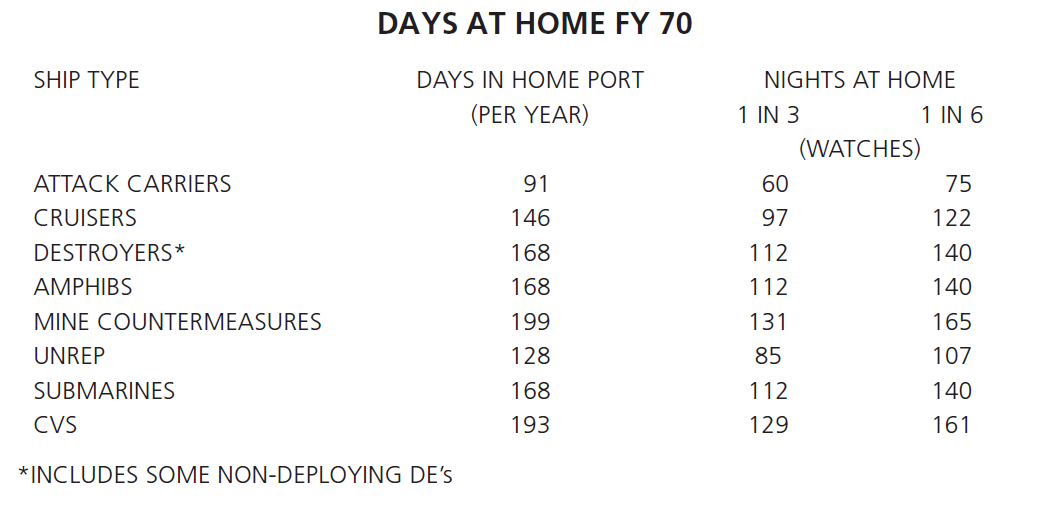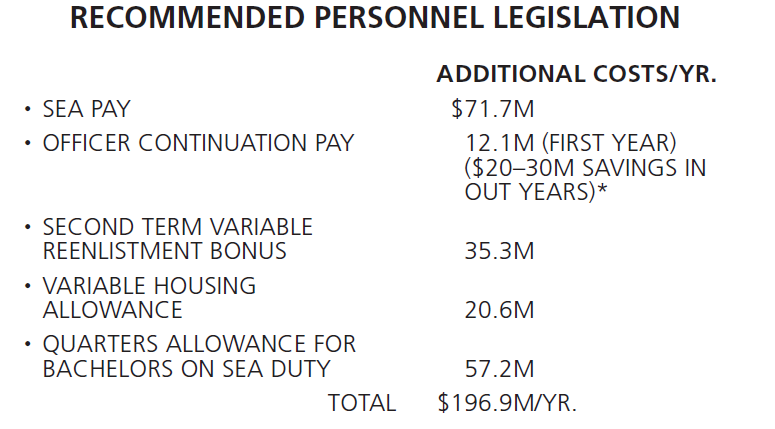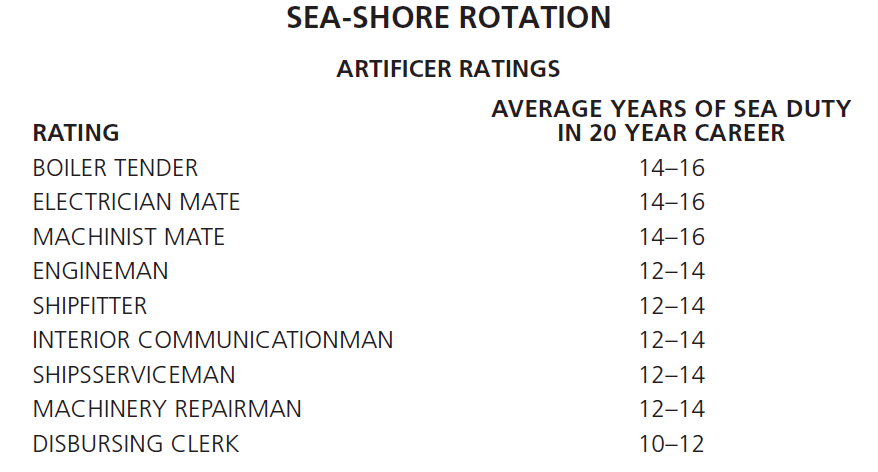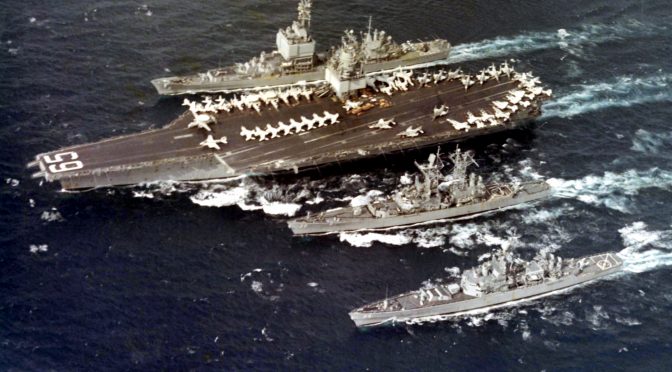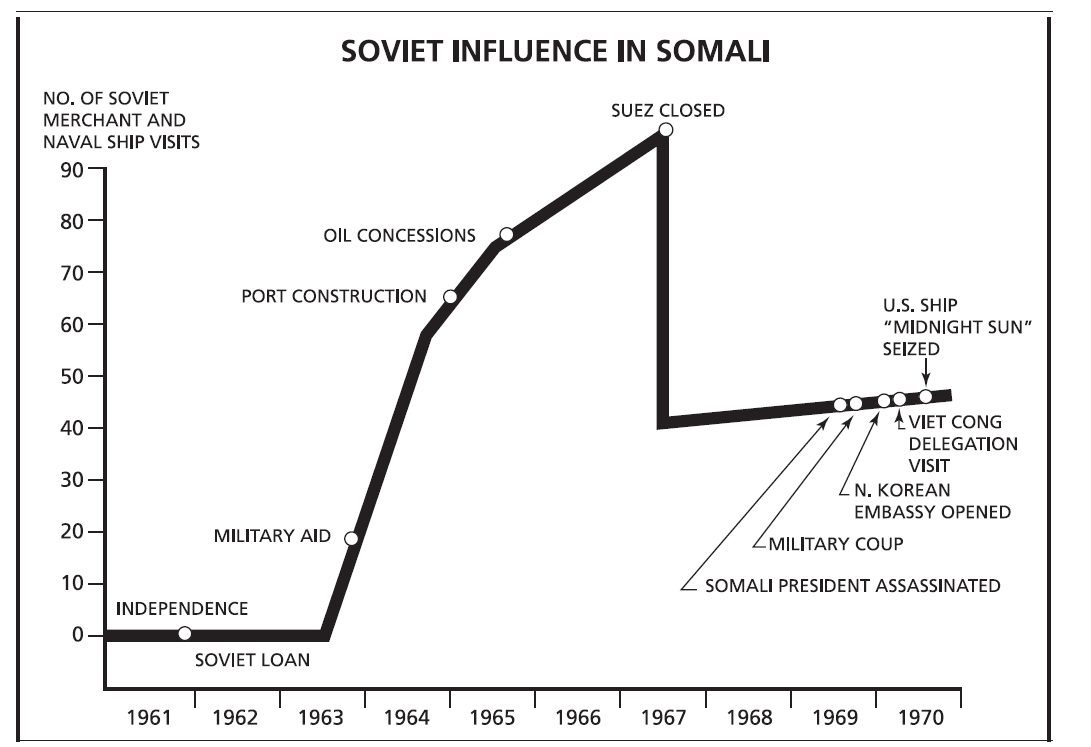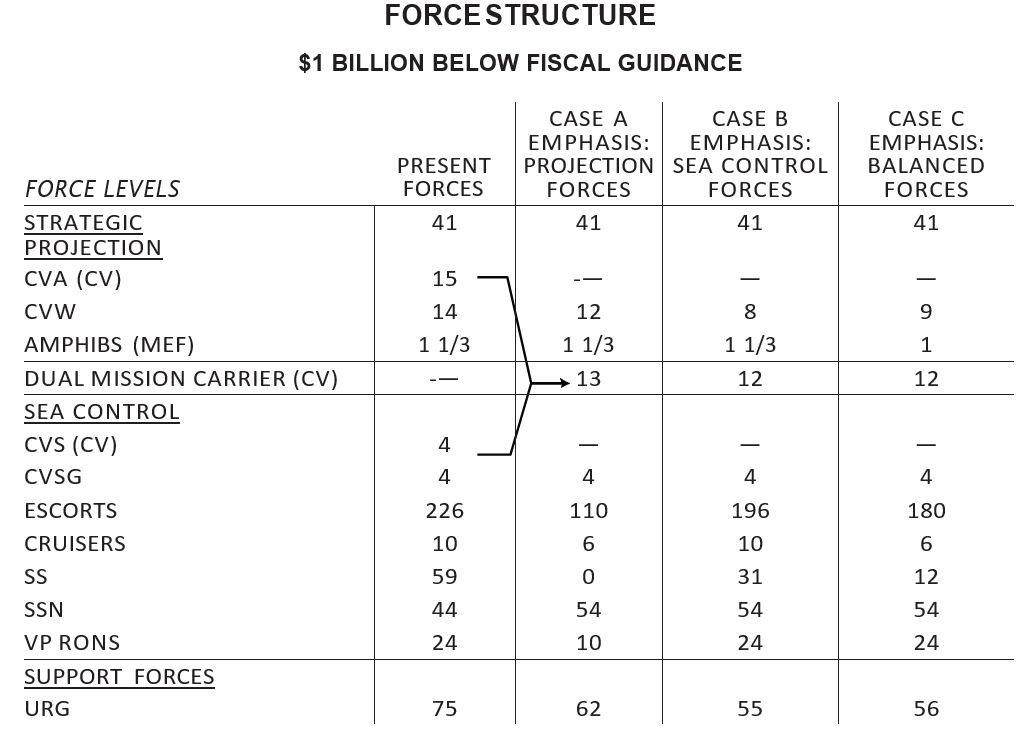By Robert C. Rubel
The Navy routinely publishes capstone documents that serve as top-level policy statements and guidance for the Service. Some are either directly titled maritime strategies or are at least referred to as such, implying that they describe ways that naval forces will be used to achieve national objectives. In truth this cannot be the case because the Navy has no authority to determine such ways; that is the province of the joint chain of command that runs from the President through the Secretary of Defense down to the Unified Combatant Commanders, bypassing both the Joint Staff and the Services. If the Navy has no authority to engage in such strategizing, why issue such documents, the latest of which is entitled “Advantage at Sea” but is commonly called the Tri-Service Maritime Strategy (TSMS)?
The widely accepted strategic syllogism is ends/ways/means; strategy specifically constituting the ways. As previously stated, developing ways in which the means – the military forces – can be used to achieve the ends – national security objectives – is the business of the joint chain of command. The Services are tasked to provide the means, so any top-down document the Navy issues must be somehow connected to that responsibility. The context in which such documents are issued is commonly resource scarcity, which means that in some way the document either outlines a way for the Service to deal with that scarcity or pleads for more resources. When internally focused, the documents tend to be straightforward guidance for adapting the Service to existing conditions. When externally focused, the actual Service strategy is to get what it wants by publishing a “strategy” document that it hopes will influence its target outside audience, be it Congress, the American public, potential adversaries or friendly countries. This desire to achieve influence via a public document appears to be behind the TSMS thus requiring us to read between its lines to infer the underlying ways.
Strategies can be thought of as solutions to problems, and the TSMS contains a formal problem statement that says China’s and Russia’s “revisionist approaches” in the maritime domain threaten U.S. interests, undermine alliances, and threaten the global order. Moreover, their aggressive naval growth and modernization are eroding U.S. military superiority. Left unchecked this will leave the Naval Services unprepared to ensure U.S. advantage at sea (this last printed in bold). There are a couple of ways to read this, one being that the Naval Services must check gray zone operations, which, as discussed, is outside Service authority. The second is that Chinese and Russian naval growth, at least in relative terms, must be checked. Presumably this is the real problem that must be solved, a view supported by the paragraph preceding the problem statement, which lists challenges to building additional capacity, including increased costs and developmental timelines of systems and weapons, and continuing budget pressures; in other words, resource scarcity.
From all this we can infer that the basic strategy behind TSMS is to publish a strategy document to add to the momentum for building a bigger fleet that was created by the Secretary of Defense’s Battle Force 2045 plan. As such, a key element of the pleading purpose of the document is to articulate a persuasive utility argument – why the nation should invest more in its Naval Services – and the TSMS is full of such language.
But the document also contains a more novel and dramatic element; it asserts that the three Naval Services will more closely integrate their efforts. In the face of resource scarcity it makes sense to try and find efficiencies and synergies, and to the extent that this is the motivation behind this part of the problem solution it is a brilliant move.
However, a close reading of the TSMS reveals a somewhat more problematic motivation and strategy. The document clearly colors outside the lines of Service authority by asserting the Naval Services will more aggressively confront Chinese and Russian gray zone operations even at the cost of incurring greater risk. In several places the document mentions the advantage the unique authorities possessed by the Coast Guard brings to the table. This implies that an underlying deal with the Department of Homeland Security has been reached to empower some anti-gray zone operational strategy. One hopes the relevant combatant commanders have been consulted, but in any case it seems to be an end run around joint authority and also appears to preempt policy making by the incoming Biden Administration. Aggressive and even risky forward naval maneuvers to intimidate an adversary was a key provision of the 1980s Maritime Strategy, which the TSMS seems to echo, but the times and the adversaries are different, and one wonders if such a frontal assault strategy is appropriate in current conditions. The document itself might be intended as a means of such intimidation since it articulates how U.S. naval forces would be successful in confronting and defeating the enemy, including the implication that U.S. forces either have or shortly will possess hypersonic weapons.
Beyond the motivations and underlying strategies just mentioned there seems to be a third element in the TSMS: relationships with allies. In a number of places the document calls for increased cooperation with international navies, especially at the higher levels on the spectrum of conflict. This echoes language in the 2015 Cooperative Strategy, but absent some kind of underlying strategy for achieving it, the words are only boilerplate. But giving the TSMS writing team credit for strategic thinking, such language can be interpreted as a move to counteract the Trump Administration’s confrontational approach to allies and partners. This echoes but is not the same as the approach taken by the 2007 Cooperative Strategy. That document portrayed the US on the strategic defensive and emphasized the peacetime uses of seapower to allay the suspicions of other nations concerning U.S. intentions due to the 2003 invasion of Iraq. That document was a part of an underlying strategy of courting international cooperation on maritime security that also involved extensive international consultation during strategy development and bringing international officers into the process. The document itself did not directly spell out any of this.
The TSMS appears to be anticipating a more internationalist policy and approach by the Biden Administration, but simply calling for more cooperation, especially in warfighting, is not an actual strategy for securing it, and other than envisioning increased exercises, the document gives us little indication of how it will be achieved. In fact, more aggressive confrontation of Chinese and Russian gray zone operations, or even their international naval engagement activities and perhaps instances of gunboat diplomacy, might serve to alarm potential partners and allies who do not want to be dragged into conflict by the U.S. In any case it is all a policy matter above the pay grade of the Services, so in the best case the TSMS will serve as an educational document for those duly authorized to make and implement such policies.
There is one element of the TSMS that is puzzling and harder to decode. On the one hand it calls for emphasizing future warfighting readiness over near term demand. On the other hand, the document calls for robust forward presence as well as conducting large fleet exercises. It is not clear how the Services will square this circle. Besides, the combatant commanders call the shots on what forces will be deployed where. Former Deputy Secretary of Defense Bob Work, who had also previously served as Undersecretary of the Navy, attempted to establish a “supply-side” approach to force deployment and was unsuccessful. While integration of the Naval Services to achieve efficiencies is laudable, it is not clear that this in itself will relieve the pressure to send forces forward.
Finally, the TSMS may be a tool for mending organizational discontinuities within the Navy. For decades the resources directorate, N8, has operated in an insular manner, repelling any attempts by the strategy office, which had been in the N3/5 directorate but which now resides within the N7 directorate, to influence the Navy’s programming. N8 relies on a numerical, computer-based analysis process called campaign analysis to determine what kinds of ships should be built, what kinds of weapons procured, etc. The more qualitative ideas coming out of the strategy process cannot be easily accommodated by the campaign analysis process and have been therefore largely disregarded. The TSMS, in addition to calling not only for a new fleet design but also a new integrated Naval Analytic Master Plan, seems to be aiming to break the logjam between the two directorates – a good thing. However, it should be noted that the team that penned the TSMS was likely composed of N7 folks and it remains to be seen what effect the document will have on the flow of influence from strategy to programming.
The intent here is not to critique the TSMS, although I have done a little of that, but rather, understanding the true nature of strategy documents issued by the Navy, to divine the intent behind it. The Navy has not had a formal strategy process, most capstone documents being the products of an ad hoc effort, so it is never a routine occurrence when one is issued. Thus it is a worthwhile exercise to try and read between the lines of a new document. Hopefully this exercise will be of use to readers.
Robert C. Rubel is a retired Navy captain and professor emeritus of the Naval War College. He served on active duty in the Navy as a light attack/strike fighter aviator. At the Naval War College he served in various positions, including planning and decision-making instructor, joint education adviser, chairman of the Wargaming Department, and dean of the Center for Naval Warfare Studies. He retired in 2014, but on occasion continues to serve as a special adviser to the Chief of Naval Operations. He has published over thirty journal articles and several book chapters.
FEATURED IMAGE: ATLANTIC OCEAN (Nov. 2, 2012) A U.S. Coast Guard helicopter prepares to land on the flight deck of the amphibious assault ship USS Wasp (LHD 1). For prudent planning, the Navy has begun to preposition Wasp, USS San Antonio (LPD 17) and USS Carter Hall (LSD 50) for primary assistance in the affected North East region if required by FEMA following the devastation brought on by Hurricane Sandy. San Antonio and Carter Hall got underway Oct. 31 from Norfolk, Va., and began transiting north to the affected areas on Nov. 1. (U.S. Navy photo by Mass Communication Specialist Seaman Markus Castaneda/Released) 121102-N-WI365-326

